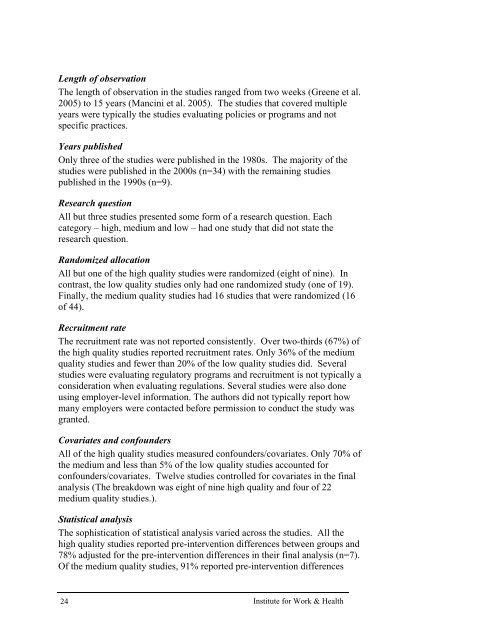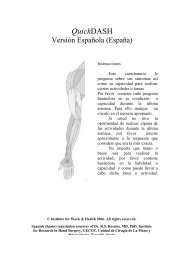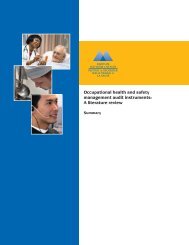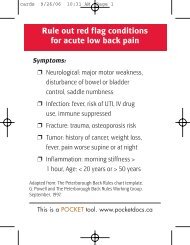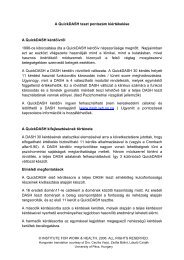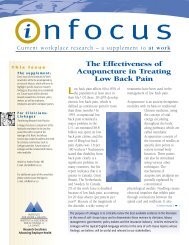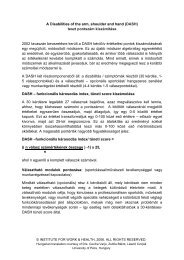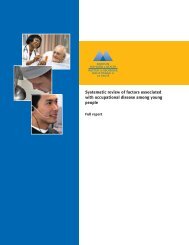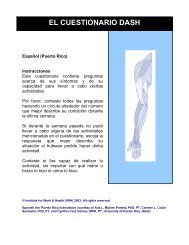A systematic review of injury/illness prevention and loss control ...
A systematic review of injury/illness prevention and loss control ...
A systematic review of injury/illness prevention and loss control ...
- No tags were found...
Create successful ePaper yourself
Turn your PDF publications into a flip-book with our unique Google optimized e-Paper software.
Length <strong>of</strong> observationThe length <strong>of</strong> observation in the studies ranged from two weeks (Greene et al.2005) to 15 years (Mancini et al. 2005). The studies that covered multipleyears were typically the studies evaluating policies or programs <strong>and</strong> notspecific practices.Years publishedOnly three <strong>of</strong> the studies were published in the 1980s. The majority <strong>of</strong> thestudies were published in the 2000s (n=34) with the remaining studiespublished in the 1990s (n=9).Research questionAll but three studies presented some form <strong>of</strong> a research question. Eachcategory – high, medium <strong>and</strong> low – had one study that did not state theresearch question.R<strong>and</strong>omized allocationAll but one <strong>of</strong> the high quality studies were r<strong>and</strong>omized (eight <strong>of</strong> nine). Incontrast, the low quality studies only had one r<strong>and</strong>omized study (one <strong>of</strong> 19).Finally, the medium quality studies had 16 studies that were r<strong>and</strong>omized (16<strong>of</strong> 44).Recruitment rateThe recruitment rate was not reported consistently. Over two-thirds (67%) <strong>of</strong>the high quality studies reported recruitment rates. Only 36% <strong>of</strong> the mediumquality studies <strong>and</strong> fewer than 20% <strong>of</strong> the low quality studies did. Severalstudies were evaluating regulatory programs <strong>and</strong> recruitment is not typically aconsideration when evaluating regulations. Several studies were also doneusing employer-level information. The authors did not typically report howmany employers were contacted before permission to conduct the study wasgranted.Covariates <strong>and</strong> confoundersAll <strong>of</strong> the high quality studies measured confounders/covariates. Only 70% <strong>of</strong>the medium <strong>and</strong> less than 5% <strong>of</strong> the low quality studies accounted forconfounders/covariates. Twelve studies <strong>control</strong>led for covariates in the finalanalysis (The breakdown was eight <strong>of</strong> nine high quality <strong>and</strong> four <strong>of</strong> 22medium quality studies.).Statistical analysisThe sophistication <strong>of</strong> statistical analysis varied across the studies. All thehigh quality studies reported pre-intervention differences between groups <strong>and</strong>78% adjusted for the pre-intervention differences in their final analysis (n=7).Of the medium quality studies, 91% reported pre-intervention differences24 Institute for Work & Health


